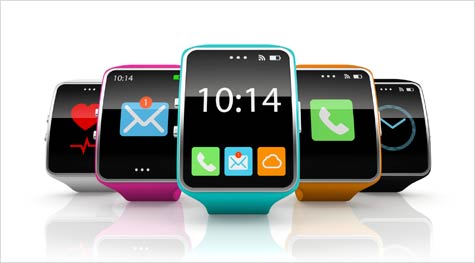I’m probably not going too far out on a limb by suggesting that the jury’s still out on how much we should care about smartwatches in general, or the Apple Watch in particular. Then again, I really have no idea what I’m talking about. So I thought it might be a good idea to check in with someone who does.
One person who can speak more intelligently than most of the rest of us on this topic is Mike Wehrs, head of U.S. operations at Appster, an Australian developer of mobile, Web and wearable apps. In a recent email interview, Wehrs shared his thoughts on where the smartwatch thing is heading, beginning with what the adoption curve is likely to look like over the next year.
“I think this will go through the same adoption curve as most high-profile new product categories,” Wehrs said. “We will see an initial spike, where early adopters have to have the newest thing, and they will do whatever it takes to get one. After that, it will level off for a period of time as the development community, and companies getting apps from them, learn how to make best use of the watch for the user scenarios they want to enable.”
Wehrs said developers will be engaged in a lot of learning, with a focus on the tethered computing architecture and on incorporating power management into the software.
“Then adoption will increase, as second- and third-generation products come out and the price starts to drop to levels more people can afford,” he said. “If we get a killer app or a similar usage scenario that a watch can do, that was not possible from any dimension with a phone, it could greatly accelerate the growth rate, as well.”
As for whether smartphones will drive smartwatch innovation, Wehrs said the smartphone contribution will come in the form of more efficient and capable processors, expanded sensor technology, and better power density in batteries.
“The smartphones will likely have hardware support for tethered scenarios, and more robust APIs for developers,” he said. “These things will help drive the complexity of the value an app can deliver, without having unacceptable delays in the user experience or unacceptable impacts on battery life.”
Wehrs said a lot will depend on what Google and Apple do in terms of interconnectivity.
“I think the real battle is going to be whether Android Gear or Apple Watch will allow connectivity to the other OS’s smartphone,” he said. “So long as the choice of the phone OS dictates what watch or other tethered peripheral you can use, the battle will remain at the OS level, not at the device level. Just as headsets work with all phones, so will it be for the peripherals over time.”
Finally, Wehrs said it’s not just Google and its OEMs of Android devices and peripherals that we can expect to see competing with the Apple Watch.
“I also wouldn’t count out Microsoft, with the launch of Windows 10,” he said. “I anticipate a major push from Redmond on phones and other peripherals that connect to it running Windows 10.”
A contributing writer on IT management and career topics with IT Business Edge since 2009, Don Tennant began his technology journalism career in 1990 in Hong Kong, where he served as editor of the Hong Kong edition of Computerworld. After returning to the U.S. in 2000, he became Editor in Chief of the U.S. edition of Computerworld, and later assumed the editorial directorship of Computerworld and InfoWorld. Don was presented with the 2007 Timothy White Award for Editorial Integrity by American Business Media, and he is a recipient of the Jesse H. Neal National Business Journalism Award for editorial excellence in news coverage. Follow him on Twitter @dontennant.




